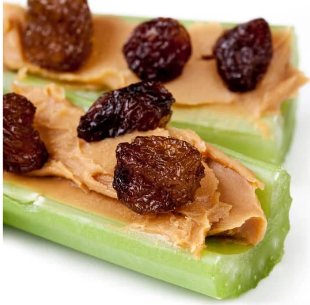A Season for Celery
- Alice in Dairyland

- Aug 21, 2023
- 3 min read
Whether you’re a fan of ants on a log, a crudité appetizer, or adding a crunch to a salad, celery seems to find a way into our diets, especially in the summer. I don’t think I have ever met anyone who says their favorite food is celery, but most people I know eagerly reach for celery to throw in soups, dip into ranch, or chop into some chicken salad. In fact, in the US, the average person consumes more than four pounds of celery each year!
According to National Public Radio (NPR), celery is native to the Mediterranean region of the world, but archaeological evidence suggests its seeds may have been transported as early as 4,000 BCE. It was primarily utilized for medicinal purposes in Italy or France until the 1600s. Charles Davis of Harvard University believes that “. . . during this period, Europeans began selecting for crunchy, succulent stems, while the Chinese cultivated a leafier variety, which today features in soups and sautés as ‘Chinese celery.’” NPR goes on to say that celery first appeared in the United States in Michigan in the 1800s, where the cool climate and mild summers met the growing needs of the crop.

Today, 80% of the celery grown commercially in the US is grown in California, but celery can be grown in just about every state! Here in Wisconsin, most celery is started from seeds inside, in late February to early April. Transplanting the seedlings outside typically starts in May, with locally variable dates depending on frost. The Gardening Dad suggests that “In general, when there hasn't been a frost for two weeks, you are SAFE to plant your celery outside.”
Celery is often irrigated, as it requires consistent watering. The Farmer’s Almanac says “stalks will be small, stringy, tough, and/or hollow if it goes without water.” They go on to say cool weather and soil high in organic matter are the two other needs for a successful celery crop. Celery is harvested in the late summer and into the fall, until the first hard frost stops growth. If you’re ready to start your own, you can learn the details of celery planting, growing, and harvesting at www.almanac.com/plant/celery.

Once you’ve successfully harvested your celery, what do you like to use it in? When I was growing up, celery was one of my main choices off of a veggie tray, and I have learned to incorporate it into more meals lately. This point in the year is the perfect time to discover new recipes incorporating celery, like my new favorite, the Grilled Summer Sausage Salad from Taste of Home.
This recipe is a fantastic way to utilize fresh garden veggies, even if they’re bought from a grocery store! The Wisconsin-made summer sausage is brushed with olive oil and grilled alongside zucchini, yellow squash and peppers. After chopping the grilled components up more, they are added to salad greens with cucumber and celery slices sprinkled about. The whole bowl is then tossed with an Italian dressing, creating a tangy, crunchy, savory salad to satisfy all of my taste buds!
If you’re wanting to try some fantastic Wisconsin-grown celery but missed the opportunity to plant your own this spring, now is the time to look for it in your local grocery store. You can also visit the Something Special from Wisconsin website at www.somethingspecialwi.com and search “celery” in to find options near you as well!













































